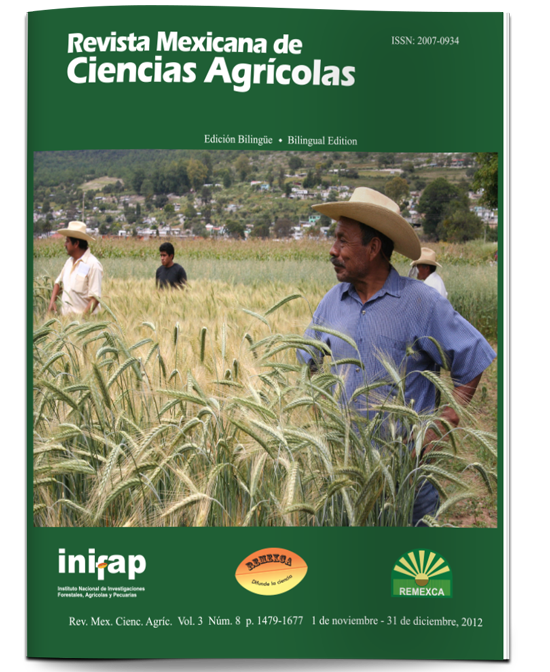Callogenesis of Heliconia collinsiana GRIGGS in vitro: establishment, induction and proliferation
DOI:
https://doi.org/10.29312/remexca.v4i8.1131Keywords:
activated carbon, dicamba, picloram, platanilloAbstract
Heliconias are grown as ornamental plants and cut flower pot. In Mexico is increasingly grown in States with tropical climatic conditions. While it is possible in vitro propagation of Heliconia by direct organogenesis, it has not yet been able to establish protocols for both indirect organogenesis and somatic embryogenesis for mass propagation of elite genotypes. The purpose of this research was to develop a protocol for callus induction and proliferation in vitro in Heliconia collinsiana. Explants of root tips, leaf, petiole and basal cross sections of pseudostem were cultivated in the culture medium of Murashige and Skoog (1962) supplemented with 13.6, 27.1, 54.3, 81.4, 108.6 and 135.7 μm of 2,4-D, dicamba and picloram combined with activated carbon (0 to 0.5 g L-1). The cultures were kept in the dark and four, eight and 12 weeks were evaluated percentage of callus induction. Only cross sections calluses induced pseudostem at the baseline at 12 weeks with 81.4 (100%) and 135.7 (90%) μM of 2,4-D and picloram, respectively, combined with 0.5 g L-1 of activated carbon. This callus by sub-cultivating them in 0, 4.5 and 9 μM of 2, 4-D in the proliferation stage responded differently.After 16 weeks, only the calluses induced continued to grow with 81.4 μM of 2, 4-D in photoperiod of 16 h. The callus generated with 135.7 μM of picloram got blackened at four weeks of culture in all the treatments.
Downloads
Downloads
Published
How to Cite
Issue
Section
License
The authors who publish in Revista Mexicana de Ciencias Agrícolas accept the following conditions:
In accordance with copyright laws, Revista Mexicana de Ciencias Agrícolas recognizes and respects the authors’ moral right and ownership of property rights which will be transferred to the journal for dissemination in open access. Invariably, all the authors have to sign a letter of transfer of property rights and of originality of the article to Instituto Nacional de Investigaciones Forestales, Agrícolas y Pecuarias (INIFAP) [National Institute of Forestry, Agricultural and Livestock Research]. The author(s) must pay a fee for the reception of articles before proceeding to editorial review.
All the texts published by Revista Mexicana de Ciencias Agrícolas —with no exception— are distributed under a Creative Commons License Attribution-NonCommercial 4.0 International (CC BY-NC 4.0), which allows third parties to use the publication as long as the work’s authorship and its first publication in this journal are mentioned.
The author(s) can enter into independent and additional contractual agreements for the nonexclusive distribution of the version of the article published in Revista Mexicana de Ciencias Agrícolas (for example include it into an institutional repository or publish it in a book) as long as it is clearly and explicitly indicated that the work was published for the first time in Revista Mexicana de Ciencias Agrícolas.
For all the above, the authors shall send the Letter-transfer of Property Rights for the first publication duly filled in and signed by the author(s). This form must be sent as a PDF file to: revista_atm@yahoo.com.mx; cienciasagricola@inifap.gob.mx; remexca2017@gmail.
This work is licensed under a Creative Commons Attribution-Noncommercial 4.0 International license.



